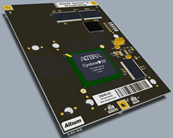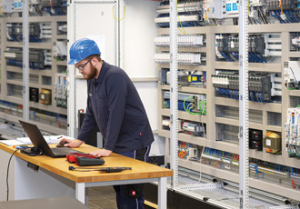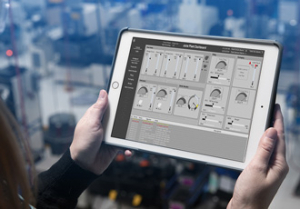Altium further extends the appeal and ease of FPGA-based design

Altium continues to make it easy for electronic designers to take advantage of programmable hardware. The company has announced another new daughter board for its desktop NanoBoard reconfigurable hardware development platform.
This latest plug-in daughter board targets features Altera’s low-cost Cyclone® III EP3C40 FPGA in a 780 BGA package. The daughter board includes a range of on-board memories for application use and a 1-Wire memory device used to store board identification and related information.
The desktop NanoBoard lets electronics designers use the flexibility and inherent ability to reprogram FPGAs to create new designs quickly, and then compare design performance across a range of different FPGA devices supported by Altium.
The Altera Cyclone III FPGA plug-in daughter board offers more opportunities for electronics engineers to experiment with different programmable devices, particularly in mainstream electronics design. Designers don’t need to commit to their final device too early in the design cycle. For example, they have the option of creating their design using one FPGA, and choosing another device for their final product. Designers can also observe the performance of an actual design running on the NanoBoard, and compare it with other devices simply by swapping daughter boards and rebooting in seconds.
When the desktop NanoBoard is combined with Altium’s unified electronics design solution, Altium Designer, designers have an Innovation Station that lets them create prototypes in a matter of days rather than weeks, optimize product performance and overall cost in their designs, and create a sustainable competitive advantage embedded within the design.
One engineer who has seen the benefits of this approach is Kylee Sealey, a consultant engineer whose company, Enginuitive Technologies, designs electronic systems for products as varied as GPS systems and quilting machines. “Altium's Innovation Station has turned my design process upside down for the better,” he says. “Before using the Innovation Station, my typical design process included a preliminary hardware design, then a software design to begin prototyping. This often led to a hardware redesign. Now, I can literally have complex prototypes running on the desktop NanoBoard within hours or even minutes. This is because the soft design precedes the hard design, which eliminates the need for a hardware redesign.”
Altium Designer’s unified design environment also lets designers lay out custom PCBs once the design is final. It manages all the design documentation required to take the design through the complete design process: early concept development; multiple prototypes creation on the desktop NanoBoard; custom 3D PCB design, including dynamic clearance checking between the PCB and its casing; final output files for manufacturing. Every designer on a project accesses a single design data model, can see the changes in the design as they happen, and can update versions and associated documentation with a single command.
Our partnership with Altium ensures our mutual customers have a solid methodology to develop designs based on Altera FPGAs, said Chris Balough, senior director of software, embedded, and DSP marketing at Altera. The addition of a Cyclone III FPGA daughter board within Altium's NanoBoard platform ensures designers can quickly and easily integrate our low-cost, low-power, high-functionality Cyclone III FPGAs into their systems.
“Extending the daughter boards available for the Altium desktop NanoBoard creates more opportunities for next generation electronics design for even more designers,” said Nick Martin, founder and CEO of Altium. “Next generation electronics design replaces loosely connected tools with a single unified design environment, which in turn lets designers innovate through experimentation. The Innovation Station places programmable devices at the center of the design process and provides a vendor-independent hardware development platform, so engineers can focus on the soft design elements. This is where competitive advantage will be found in the future – not just in the way a product looks, but in the functionality it provides the user, and in the interface through which this functionality is delivered.”
Altium Designer and Altium's desktop NanoBoard, which comes standard with a choice of one FPGA daughter board, are available from Altium's Sales & Support centers at www.altium.com/contacts, or as the Innovation Station from Digi-Key at www.digikey.com.
Similar articles
More from Altium Limited
- Co-design tool extension facilitates ECAD/MCAD collaboration 27th May 2015
- Altium invests in global services team 28th June 2011
- Altium and Würth Elektronik collaborate on new component libraries - More than 1,500 passive components from Würth Elektronik available through AltiumLive 22nd June 2011
- Altium introduces a major innovation in data management for electronics design: the Altium Satellite Vault 9th June 2011




 technology at Jacobs Vehicle Systems.JPG)







Write a comment
No comments